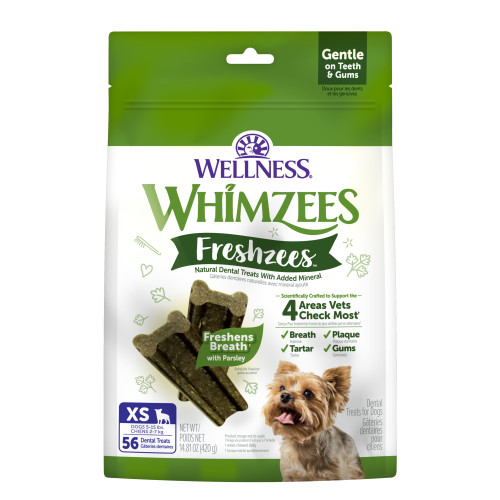October 29, 2021
How to Recognize Pain in Your Pets
It should come as no surprise that pets, like people, feel pain; however, unlike people, pets can’t articulate what hurts and where. They can’t say, “Wow, my paws are really hurting after that walk in the snow; I think I have frostbite!” or “My stomach has stabbing pain all of a sudden!” Instead, they tell us through gestures. Pets express pain for multiple maladies including:
- External pains, which could include cuts, burns, scrapes, bruises, aches, fleas, ticks, bites, etc.
- Internal pains, which could stem from virus, infection, poisoning, upset stomach, disease, toothache / gum disease, joint pain, arthritis, etc.
Take the time to learn how to recognize pain in your pets, so you can get the proper help for them.
Pets Show Pain Through Eating Habits
Eating habits are one way you can recognize pet pain. Pets that are in pain will:
- Choose not to eat
- Drink more or less
- Show less interest in food
- Regurgitation
Excessive or diminished thirst and dietary habits are associated with a number of pain-causing issues. Some could be more obvious; changes in dietary habits with dry food in combination with other signs of pain (like drooling) could indicate oral health issues.
Pets Show Pain with Mood Changes
Pets tell us they’re in pain with mood changes. When pets suddenly act depressed, fussy, moody, snippy, grumpy, or agitated, they are telling us they’re in pain. Pets might also become more aggressive or combative.
You will recognize pain in your pets through mood changes when the attitude or behavior is noticeably different from how your pet usually acts in response to typical stimuli. For example, if your pet who used to roll around and play on the floor with your five-year-old suddenly starts snipping at her when she comes near, you know that your pet has an issue.
Pets Show Pain by Speaking Up
Even though pets can’t say, “It’s my arthritis acting up!” they can send verbal cues that all is not well. Pets may show signs up pain by moaning, growling, yelping, or crying out. Sometimes, these audible cues will occur often such as when your dog lays down, he might groan, or your cat might growl every time she jumps off the bed.
Pets Show Pain with Grooming Habits
Other times, pets will yelp or cry out (or lash out) in pain when a sore spot is touched either by you or someone else or themselves while they’re grooming. If you notice your cat or dog lick a spot excessively and yelp as if they startle themselves, you can presume they have a pain spot. Don’t assume that it’s all internal, though, as sometimes pets will overly-groom a spot that is hurting internally.
Pets Show Pain with Their Bodies
Your pet’s outward presentation in terms of changes to their bodies as well as how they position them could indicate both internal and external issues. For example, swelling is never to be ignored because it could be an abscess, infection, tumor, etc.
To compensate for internal as well as external pains, pets will often assume different postures, laying in a different position or sitting or walking differently to avoid triggering a pain area. Again, you can recognize pain in your pet by noticing differences to their usual body language.
Pets Show Pain by Being Less Active
Pets that are in pain will tell you by being less active. They won’t want to play, go for walks, run around, exercise, or do any of the usual fun things that keep them otherwise fit and healthy. If your pet flees from the leash or demonstrates one of the other signs of pain (such as growling or yipping) when you try to motivate them to play, they need to see a veterinarian because it’s likely they’re in pain.
Pets Show Pain by Hiding
Hiding is another indication that pets are in pain. They might try to escape to their pet bed, under your bed, a corner, etc. while they’re hurting. If hiding is atypical for your pet, then it could be a sign your pet is in pain.
Pets Show Pain Through Changes in Biological Functions and Neurological Control
Lastly, pets show change through biological functions and neurological control. Specifically, if you notice these following signs, your pet may be in pain:
- Panting
- Rapid breathing
- Rapid heartbeat
- Shaking
- Tremoring
The pain in the case of shakes and tremors could be caused by life-threatening issues such as pancreatitis, kidney disease, or poisoning. While older pets may shake due to aging, it’s worth noting that if shaking isn’t normal or if your pet hasn’t just been exposed to extreme cold, then shaking, should be taken as a serious emergency.
The most important thing is when you recognize pain in your pets is to not try to conduct an armchair diagnosis. Instead, take your pet to the vet where they can find and fix your pet’s pain.
And of course, preventative care can have an impact on reducing any impending pain your pet might experience. For example, feeding a diet to help with your dog’s joint health can be a great way to mitigate pain for active or senior dogs.
Keeping pets well and pain free is just a much a priority here at Wellness Pet Food as it is for you. We show our commitment to keeping your pet pain free by creating healthy, tasty pet food recipes perfect for pets in all stages of life.





